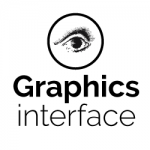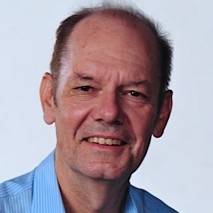The 2012 CHCCS/SCDHM Achievement Award of the Canadian Human Computer Communications Society is presented jointly to Daniel Thalmann and Nadia Magnenat Thalmann in recognition of their pioneering work in the development of lifelike, synthetic human models for computer animation. In giving this award the Canadian Human Computer Communications Society recognizes that it is honoring only a portion of the rich legacy of these two researchers, both jointly and individually. Their output approaches a thousand scholarly articles, contributions to numerous books, and over sixty short films. So it is with some apology that we are choosing to focus only on their joint efforts in physical modeling and computer animation that they have directed towards developing realistic virtual actors. They began this work in the 1980s at the University of Montréal in Quebec, and they have continued since 1988 at the University of Geneva in Switzerland, for Nadia, at the École Polytechnique Fédérale de Lausanne (EPFL) in Switzerland, for Daniel, and more recently at the Institute for Media Innovation, at the Nanyang Technological University (NTU) in Singapore, for both.
Professor Nadia Magnenat Thalmann is currently Director of the research laboratory MIRALab, at the University of Geneva and Director of the Institute for Media Innovation, at NTU in Singapore. Her formal training includes a PhD in Quantum Physics (1977) from the University of Geneva, two Postgraduate Certificates in Computer Science, one jointly in Mathematics (1977) from EPFL, Switzerland, and one jointly in Statistics (1975) from the University of Geneva, and three Master’s degrees, in Biochemistry (1972), Biology (1966), and Psychology (1966) from the University of Geneva. She has been given two honorary doctorates, one from Leibniz University of Hannover in Germany (2009) and another one from Ottawa University in Canada (2011).
Professor Daniel Thalmann is now with the Institute for Media Innovation, at NTU in Singapore. He was Director of The Virtual Reality Lab at EPFL until 2011. His formal training includes a PhD in Computer Science (1977) from the University of Geneva, a combined Certificate in Statistics and Computer Science (1972) from the University of Geneva, and a Master degree in Nuclear Physics (1970) from the University of Geneva. He has also been given an honorary doctorate (2003) from the University Paul-Sabatier in Toulouse, France.
Daniel and Nadia arrived in Canada in 1977, and by 1979 they had taken positions as Assistant Professors at the University of Montréal, where Nadia founded MIRALab. They became interested in the realistic computer modeling and rendering of the human form, in motion, including lifelike facial expressions. Their films began with “Dream Flight” in 1982 (in cooperation with Philippe Bergeron), which provided them with the basic experience in making a computer generated short film using a wire-frame synthetic actor and key-framing. This was followed by “Rendez-vous à Montréal,” which is widely regarded as the first computer film to employ synthetic actors, in this case Humphrey Bogart and Marylin Monroe. By this time they had developed a more complete system for key-framing body motion, body representation with smooth surfaces, and the beginnings of infrastructure for animating facial expressions. Some of their students and collaborators, Philippe Bergeron, Pierre Lachapelle, Daniel Langlois and Pierre Robidoux, built upon this groundwork to produce the film “Tony de Peltrie,” shown at SIGGRAPH ’85, which gained wide acclaim as the first film in which a synthetic actor was able to convey complex emotions. Above all else, Nadia and Daniel served in a major way as a focus and inspiration for the use of computers in animation that flourished in the Montréal area in the 1980s, a time of great activity that saw computer animation interest by the National Film Board, headquartered in Montréal, and the founding of successful commercial enterprises in that city to develop modeling and animation systems.
By the mid-1980s, Nadia and Daniel had begun to confront more difficult issues in creating lifelike synthetic actors. Their publications engaged mathematical tools for dynamics, better surface models suitable for faces and hands, the animation of realistically deformable objects, and more naturalistically articulated skeleta and joints. They had also begun spreading their ideas throughout Canada and beyond by chairing conferences, notably Graphics Interface ’85, and through editorial positions, notably for the The Visual Computer and the Journal of Computer Animation and Virtual Worlds.
In 1989 they moved back to Switzerland to take positions at the University of Geneva and École Polytechnique Fédérale de Lausanne. Nadia recreated MIRALab at the University of Geneva, while Daniel created The Virtual Reality Lab at EPFL, and the work begun in Canada progressed further in a European setting. In 1992 they founded the Computer Graphics Society with two other pioneers of computer graphics; Professors Rae Earnshaw (UK) and Tosiyasu L.Kunii (Japan). Through the society they founded four long running conference series; Computer Graphics International, Computer Animation, Pacific Graphics, and MultiMedia Modeling.
The early 1990s saw Nadia publish papers on the physical modeling of cloth and the use of finite elements and operations tied to joints to address the clothing of synthetic actors and the realistic deformations of their bodies and limbs. Later in the 1990s, the physical modeling of hair was added to her repertoire as was the simulation of facial muscles through free-form deformations, as well as the synchronization of lips with speech. Daniel focused his research on behavioral animation of Virtual Humans, introducing the concept of synthetic vision for Virtual Humans, and developing methods for realistic gait modeling. The early 2000s saw Nadia and Daniel release VHD++, a real-time development framework for virtual character simulation, and they began exploring the techniques of motion capture and methods of registering the captured motion onto actors inside surrounding environments. The capture of motion led further Nadia to the use of medical data to enable more realistic 3D simulation of joint and skeletal models. Notable were her publications on studies of the hip joint via MRI scans, where she and her students received the first Eurographics medical award (2008). In the late 1990s, Daniel launched the first project on crowds of virtual humans, initiating a new field of animation that now attracts many researchers. Rendering of tens of thousands of agents, collision detection and generation of varieties of individual people became important issues. Nadia has progressed through various versions of a model for Marilyn Monroe, each more realistic than the last, and in 1995 the film “Marilyn by the Lake” is one of her first presentations of a virtual Marilyn appearing with live actors in an actual outdoor setting. Two films that combined the techniques that Nadia explored in cloth, hair, body, joint, environment placement, and character-character interaction were “Rêves d’un Mannequin” and “Virtual Life in Pompeii,” both directed in 2003. Nadia’s work on computer generated clothing led to the first virtual fashion show, and in 2007 she and her team in Geneva made an award winning movie, “High Fashion in Equations.” Tailored out of exquisite materials and artfully designed patterns, high fashion garments constitute the most sophisticated kind of clothing. The uniquely manufactured pieces, only affordable for a small circle of clientele, are not only envelopes for the human body, but artworks that make visible cultural aspects, tendencies and trends. Historical haute couture garments are characterized by an additional aspect: for time-specific garment details affiliated with certain époques to become evident, the complexity of the models used must become even greater than for ordinary garments.
The research that both separately and together have done has now broadened to contribute not only to computer animation, but it currently explores how their results can assist in medicine by exploiting MRI data, how it may be used to recreate historical scenes, where the models can assist in the fashion industry, and what implications there are for Virtual Reality. Daniel and Nadia’s contributions have gone far beyond the release of short films and academic papers. Both have been active in organizing and chairing over fifty international graphics conferences as well as engaging in editorial duties for over a dozen international journals. The Canadian Human Computer Communications Society is happy to recognize that all this has flourished from beginnings at the University of Montréal and spread from there throughout the international community.





